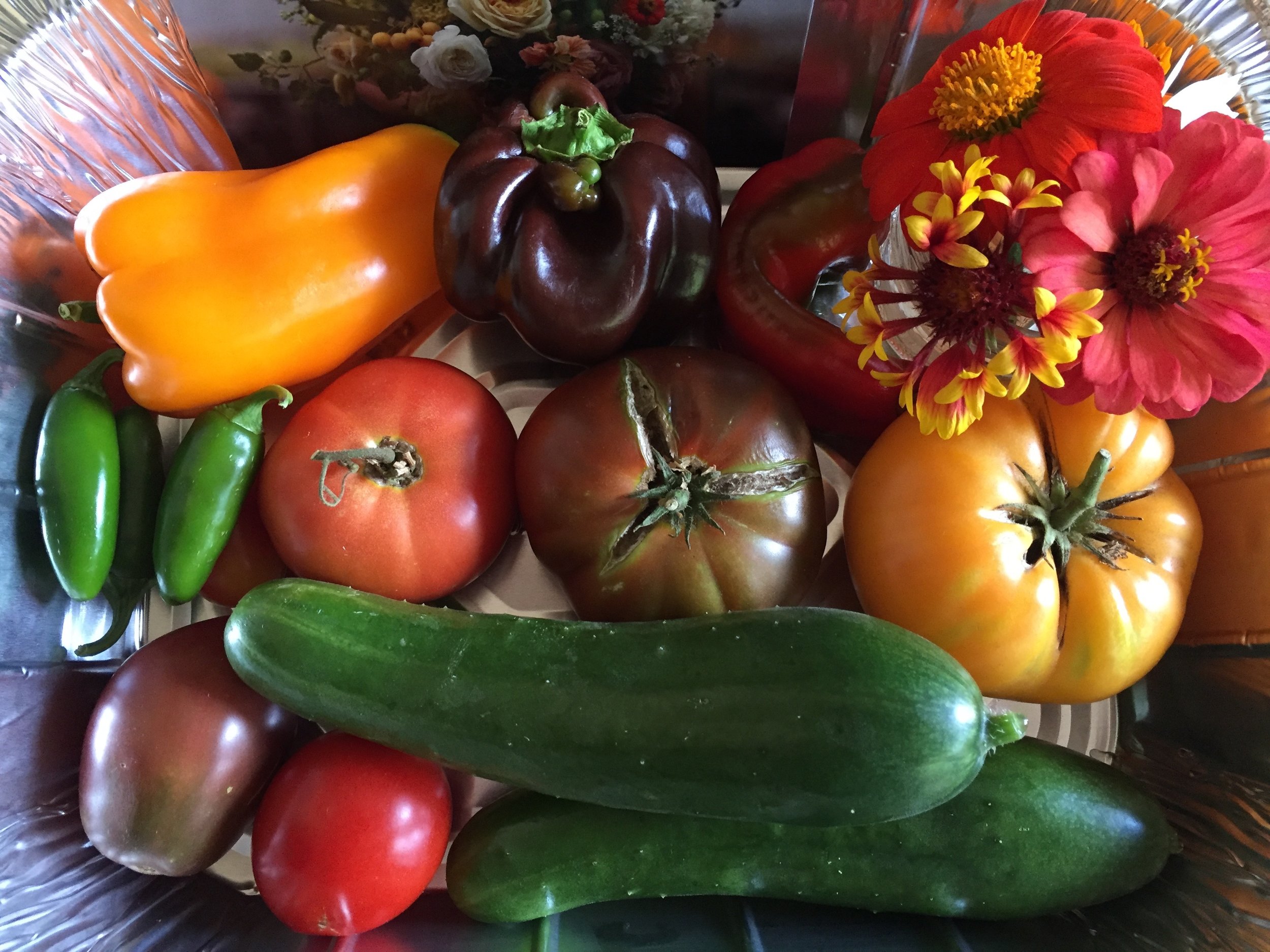I'm taking a Terminology class as part of this semester's course load. It's a hard class, with lots of information to know and memorize. But it's also a fascinating class, and I'm learning so much about the way things in the natural world are classified.
This past week our lecture and lab were about fruit. There are two kinds of fruit - dried and fleshy. Fruit is further divided into two more categories; dehiscent and indehiscent. Dehiscent fruit opens to release its seed, while indehiscent fruits do not open. For example, legumes are dried, dehiscent fruit. We eat it while it's green, but if dried, the pods split along two lines of dehiscence and release the seed. Think peas and beans. Or wisteria. Or a redbud tree.
Nuts are actually a dried indehiscent fruit, i.e. hazelnuts, acorns, or pecans. A walnut is actually a drupaceous nut. We'll get to drupes in a minute. A cashew is actually a seed. A peanut is a legume, see above.
A sunflower seed is actually a fruit called an Achene. It's a small, dried, indehiscent fruit with a hardened pericarp (ovary wall) surrounding a single seed. (The seeds of strawberry are also achenes - each of those small brown things around the outside of the red bit are the actual fruit. The part that is red and tastes good is a swollen receptacle - the bit that holds the flower.) Achenes are formed from every pistil. Each pistil becomes a separate fruit.
Grasses and grains are Caryopsis - a dried, indehiscent fruit like an achene except it is fully fused to the pericarp. A grain of rice is a fruit, a caryopsis. Ditto a grain of wheat.
Those winged seeds that fly from maple trees every year are called Samaras - and they are a winged achene. Each contains 1-2 seeds.
Let's move on to the fleshy fruits. Can you guess what fruits are berries?
Yep, tomatoes are berries! Peppers are berries! Eggplant are berries! A berry is a fleshy, indehiscent fruit with multiple carpels (ovaries) and multiple seeds. All, or most, of the pericarp is fleshy. That is, the part that we eat and enjoy is the ovary wall. More berries: grapes, pomegranates, kiwi, and persimmons. Oh, and bananas! Though those have the seeds bred out of them (that's another story).
Cucumbers, melons, and squashes are a type of specialized berry called Pepo. They are all defined by a leathery rind and a fleshy interior. The ovary lacks septa, which are fleshy dividers between the locules (chambers of the ovary). So it's one big ovary.
Citrus is also a specialized type of berry called Hesperidium. They have leathery rinds with oil cavities, and a fleshy, juicy interior divided by septa (the dividing lines between sections we eat).
Raspberries and blackberries are also a specialized type of berry called Aggregate berries. They have clusters of many separate pistils in each flower, and each pistil forms a druplet. Sometimes strawberries are also called aggregate berries, although they are better defined as...
Accessory fruits, which is a fleshy fruit developing from something non-ovarian. Cashews are also accessory fruits. Look up a cashew flower on google, it's quite interesting looking.
An apple is a Pome, which is a specialized accessory fruit. Look at the picture below - do you see the inner ring around the seeds? That's actually the ovary, so that plus the seeds is the actual fruit. The fleshy part we enjoy is derived from the hypanthium (which is all the petals, sepals, and stamens fused together). This is also true of pears and quince.
A rose hip is also an accessory fruit, formed from a hollow leathery hypanthium which contains many achenes.
How about peaches and plums? These you probably know as stone fruit, which are (in the world of botany) called Drupes. Drupes are a fleshy, indehiscent fruit with a stony endocarp (the innermost layer of the pericarp). So the endocarp becomes the pit, and the flesh is the mesocarp (middle layer of the pericarp).
And one last amazing kind of fleshy fruit, called Multiple fruits. Pineapples are multiple fruits! If you look at the outside of a pineapple, you'll see many different dried flower parts. Those inner parts all form many druplets that fuse together! So a pineapple is really many fruits all fused together. Mulberries fit this category, too.
I came out of this lecture with my head spinning, but glad to know what everything REALLY is! Now you too can amaze your friends at parties. When you're biting into a jalapeno pepper, you can say "did you know peppers are actually berries?" and hopefully it won't peg you a total loser.






